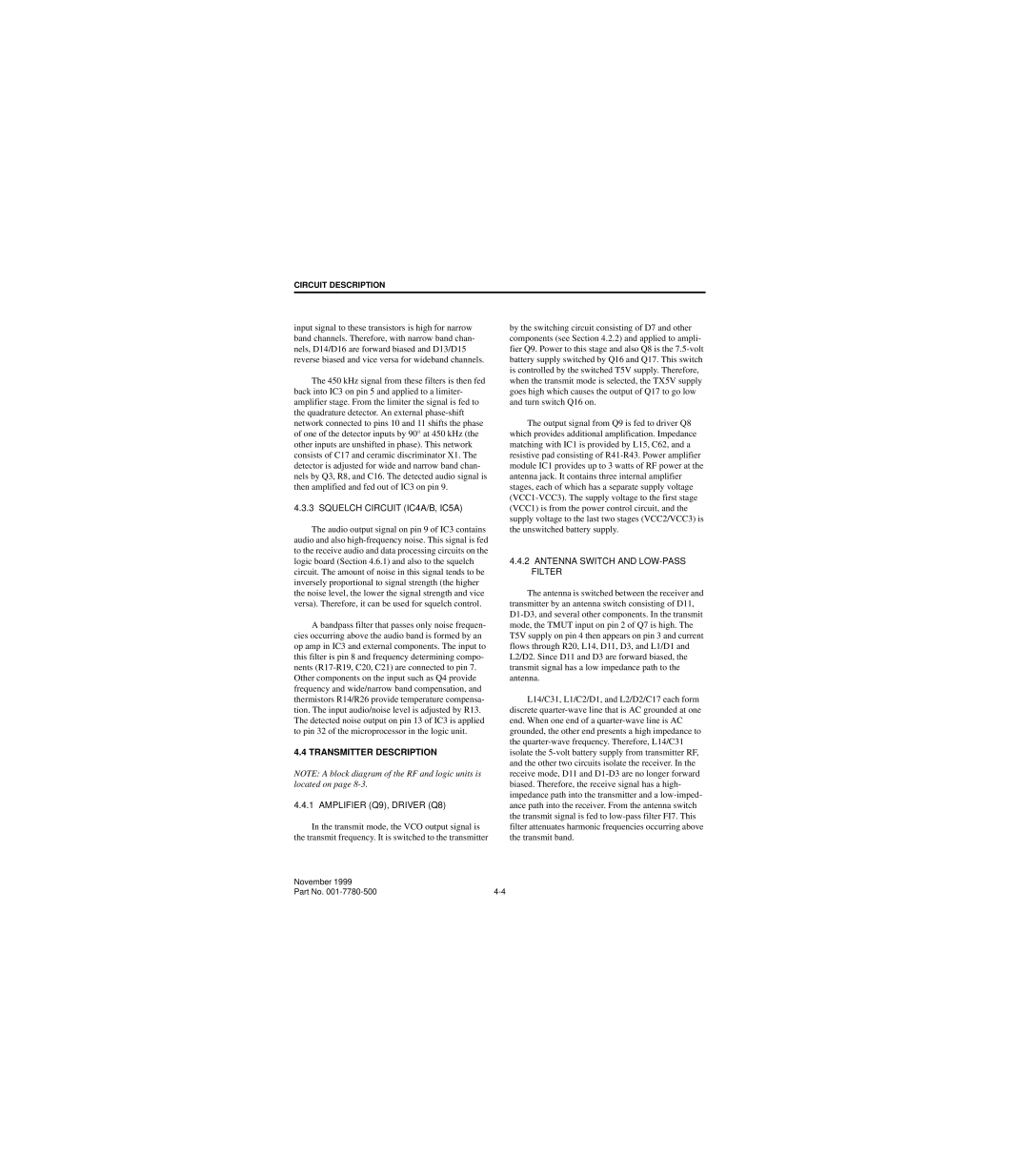CIRCUIT DESCRIPTION
input signal to these transistors is high for narrow band channels. Therefore, with narrow band chan- nels, D14/D16 are forward biased and D13/D15 reverse biased and vice versa for wideband channels.
The 450 kHz signal from these filters is then fed back into IC3 on pin 5 and applied to a limiter- amplifier stage. From the limiter the signal is fed to the quadrature detector. An external
4.3.3 SQUELCH CIRCUIT (IC4A/B, IC5A)
The audio output signal on pin 9 of IC3 contains audio and also
A bandpass filter that passes only noise frequen- cies occurring above the audio band is formed by an op amp in IC3 and external components. The input to this filter is pin 8 and frequency determining compo- nents
4.4 TRANSMITTER DESCRIPTION
NOTE: A block diagram of the RF and logic units is located on page
4.4.1 AMPLIFIER (Q9), DRIVER (Q8)
In the transmit mode, the VCO output signal is the transmit frequency. It is switched to the transmitter
by the switching circuit consisting of D7 and other components (see Section 4.2.2) and applied to ampli- fier Q9. Power to this stage and also Q8 is the
The output signal from Q9 is fed to driver Q8 which provides additional amplification. Impedance matching with IC1 is provided by L15, C62, and a resistive pad consisting of
4.4.2ANTENNA SWITCH AND LOW-PASS FILTER
The antenna is switched between the receiver and transmitter by an antenna switch consisting of D11,
L14/C31, L1/C2/D1, and L2/D2/C17 each form discrete
November 1999 |
|
Part No. |
